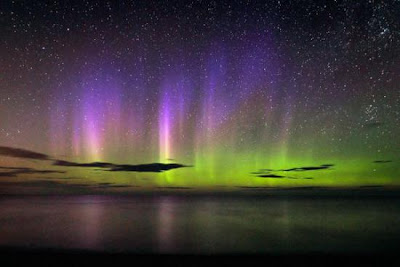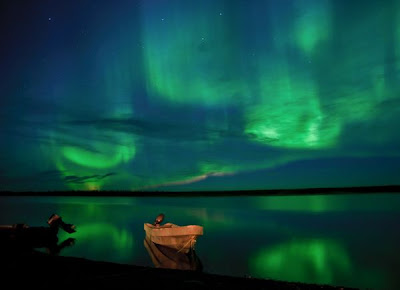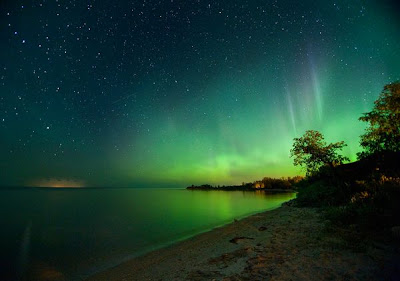



Every once in a while, the third rock from the Sun gets buffeted by a storm originating from its solar guardian. Energized particles rain down upon the Earth, and like water down a hill, flow down the planet’s magnetic field lines toward the Poles. As this deluge of particles collides with atoms in our atmosphere, light energy is released, and a rainbow of shimmering colors hangs over the ends of the Earth
Last week’s northern lights—which lasted a few days—were products of a large burst of plasma, or charged gas, from the sun known as a coronal mass ejection. A NASA orbiter called the Solar Dynamics Observatory saw last Sunday’s eruption, which was aimed directly at Earth and sparked predictions of a shimmering sky show.
Now it seems aurora fans may be in for another treat: A solar flare spotted Saturday by NASA’s Solar and Heliospheric Observatory was even more powerful than the previous eruption. Although this time the bulk of the plasma burst isn’t aimed right at Earth, scientists say it could still trigger another round of colorful auroras.
In the Northern Hemisphere, auroras are more commonly seen at high latitudes near the Arctic Circle, such as northern Alaska, Canada, and Scandinavia.
But scientists predicted that last Sunday’s strong burst would bring the light show to slightly lower parts of the globe. In fact, sky-watchers were snapping pictures of auroras as far south as Oslo, Lake Manitoba in Canada, and Lake Superior (map) in the United States.
Bron: naturalplane
Voeg toe aan:







